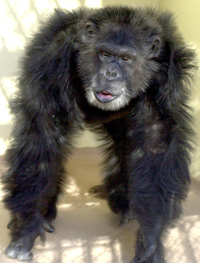By Lyndsey Garcia
I have a confession: I have never personally been interested in performing research. I love to read, listen, and talk about research and latest developments, but never saw myself micropipetting or crunching raw data in the lab. But after attending the Duke Undergraduate Research Society (DURS) Kickoff, they got me to sign up for their listserve!

DURS Executive Board: (from left to right) Joseph Kleinhenz, Syed Adil, Lillian Kang, Dr. Huntington Willard, Sammie Truong, John Bentley
The kickoff highlighted DURS’s leading man, Dr. Huntington Willard. He was a biology pre-med undergraduate at Harvard for 3 years until he was introduced to genome research, which quickly became his life’s passion.
In 2002, Willard launched the Institute for Genome Sciences and Policy at Duke, which grew to more than 100 faculty and 300 staff members. The institute unfortunately met its end this past June, but Willard continues his love and passion for genome research here at Duke, and with Duke undergraduate students.
Before creating IGSP, Willard had only interacted with medical and graduate students during his research. But at Duke he had his first opportunity to engage with undergrads.
“The best thing at Duke is the undergrads and I wanted to take advantage of the best thing at Duke,” he says.
Willard explains his love for research by explaining the inherent differences between all Duke students and those Duke students who perform research. All Duke students love to learn and are interested in what they are learning, but Duke students who research are questioners. He says they want to know more than what is given in the textbook. They constantly go between B and C on the test because there could be valid reasons for both, but we just don’t know why yet. They aren’t afraid to delve into uncharted territories where there is no safety net of certainty.
Willard says many of these young researchers seem to follow his own motto: “This is so cool. I want to know how it works.”
Willard’s talk already had me inspired, but then I got to hear from the executive board of DURS. Each member explained the research they are involved with on campus and how they got there. They explained how they sent tons of emails to professors and received no responses and gave anecdotes about switching labs because it wasn’t what they wanted.
They also expanded on what DURS offers to undergraduates. The program connects professors and undergraduates for potential research positions, sets up workshops to help make networking contacts, pairs young undergrads with experienced undergrads to mentor and give advice, and helps one realize that no one came out of the womb with lab experience, so don’t be discouraged by not having any at first.
“This is exactly why I came to Duke. It’s a great university with amazing research opportunities and now I can’t wait to get started.” – Freshman Jaclyn Onufrey.
So my takeaway from Duke Undergraduate Research Society was:
1) Are you interested in questioning the unknown?
2) Do you want to be part of discovering something new?
3) Don’t know where to start?
If any of those aspects apply to you, it’s definitely worth hitting up DURS!















